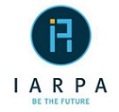IARPA invites industry to QEO Proposers’ Day Conference
 On September 29, the Intelligence Advanced Research Projects Activity (IARPA) released the following invitation for its upcoming Quantum Enhanced Optimization (QEO) Proposers’ Day Conference, to be held on October 26. Attendees must register by October 19.
On September 29, the Intelligence Advanced Research Projects Activity (IARPA) released the following invitation for its upcoming Quantum Enhanced Optimization (QEO) Proposers’ Day Conference, to be held on October 26. Attendees must register by October 19.
The Intelligence Advanced Research Projects Activity (IARPA) will host a Proposers’ Day Conference for the QEO program on October 26, 2015, in anticipation of the release of a new solicitation. The Conference will be held from 7:30 am to 6:00 pm EDT in the Washington, DC metropolitan area. The purpose of the conference will be to provide information on QEO and the research problems the program aims to address, to address questions from potential proposers, and to provide a forum for potential proposers to present their capabilities for teaming opportunities.
This announcement serves as a pre-solicitation notice and is issued solely for information and planning purposes. The Proposers’ Day Conference does not constitute a formal solicitation for proposals or proposal abstracts. Conference attendance is voluntary and is not required to propose to future solicitations (if any) associated with this program.
PROGRAM DESCRIPTION AND GOALS
QEO seeks to harness quantum effects required to enhance quantum annealing solutions to hard combinatorial optimization problems. The physics underlying quantum enhancement will be corroborated by design and demonstration of research-scale annealing Test Beds; comprised of novel superconducting qubits, architectures, and operating procedures. All work will serve to demonstrate and quantify the maximum quantum enhancement achievable beyond state-of-art classical methods, and ultimately provide a basis for design of application-scale quantum annealers for solution of practical optimization problems.
The QEO Program is anticipated to focus on the following four specific applications problems:
- Fault diagnostics, and specifically problems related to a 16×16 multiplier CRC, circuit C6288 (i.e., http://web.eecs.umich.edu/~jhayes/iscas.restore/c6288.html);
- k-SAT (i.e., at minimum 3-SAT) for problems including filter design for Filtering and Selection, and other significant problems where k-SAT offers compelling performance;
- Schedule optimization including but not limited to job-shop scheduling, the traveling salesman problem, and circuit layout; and,
- Graph and subgraph isomorphism problems.
The QEO program is divided into two phases. Phase 1 will run for a period of 24 months, followed by Phase 2 at 36 months.
QEO seeks to develop theory, simulation, and experimental capability to design, build, execute, analyze, and optimize quantum annealing Test Beds and experiments, addressing select experimental challenges. Successful QEO performers will produce innovative quantum annealing programming, hardware designs and operation, and design and analysis of experiments.
QEO performers may rely on state-of-art, Government-Furnished development of state-of-art components and integrated elements for their Test Beds, for validation of developed concepts.
From all developments, the goal of the QEO Program is to provide a physical basis of design for application-scale quantum annealers providing the maximum enhancement achievable in solution of practical optimization problems.
The relative quality of results meeting the program goal will be judged by plausible projections of enhancement over the best classical methods; including such measures as residual energy, time-tosolution, improved scaling behavior, and in addition where appropriate, the statistical quality of degenerate solutions (e.g., Hamming distance disparateness of k-SAT filter solutions).
QEO seeks to explore several highly advanced quantum annealing capabilities and the widest possible range of design space, including the following:
-
Physical-Spin-Qubits with high, tunable coherence and function;
-
Advanced quantum fluctuations (e.g., multi-spin fluctuations);
-
Broader classes of spin connectivity and physical architectures to access a broader, harder, problem space (e.g., simultaneous long-range and multi-spin interactions, higher intrinsic connectivity);
-
Real-time measurements during the annealing protocol to elucidate quantum enhancement phenomena and optimize both design and dynamic operation for performance;
-
Advanced annealing protocols (e.g., spatially-varying fields and couplings, adaptive control methods based on feedback, active qubit cooling);
-
Error mitigation: error suppression, as well as engineered dissipation and cooling;
-
Greater precision, stability, and speed of calibration and control signals using state-of-art electronics;
-
Smart integration that optimizes the separate quantum (coherent Ising spins and couplings) and classical (control and readout) elements of the annealing system
Full information and registration instructions are available here.
Source: FedBizOpps







